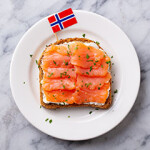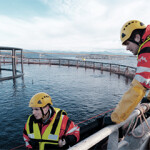Alaska pollock fishery battles salmon bycatch with new technology
Boats fishing for pollock in Alaska have long been going out of their way to avoid another one of the state’s most celebrated species: salmon.
Ample amounts of fuel and time have been spent by the Alaska pollock fleets attempting to curb salmon bycatch, to the extent that “running away from salmon” has become an ingrained part of the pollock-catching process in the region, according to SeaWeb Seafood Summit panelist and C/P Starbound Vessel Manager Karl Bratvold.
“It’s kind of a double-edged sword – you’re burning fuel, and you don’t want to be out burning fuel running away from fish. It’s kind of a tough deal for us to have to run away from salmon so we can catch pollock,” said Bratvold during a summit session on 6 June in Seattle, Washington.
“What Karl says is really true. We’ve had various times when we’ve had to move, and that’s been part of the process that we’ve lived with. It’s definitely had an effect,” confirmed fellow panelist Allen Kimball, executive vice president of global species management at Trident Seafoods.
Both Bratvold and Kimball hold out hope that the days spent taking the long way around and missing out on a good catch will soon be behind them with the continued development of new salmon excluder innovations.
“Part of the issue is that we are having to run away from good fishing to avoid salmon, which is why we have this big focus on trying to get the excluders as salmon escapements, so we don’t have to spend our time running away from good fishing to avoid another fish,” said Bratvold, who’s company – alongside the rest of the pollock fishery – has been working with the private sector and academia to hone the innovations for close to five years.
“The pollock industry collaborates with regional universities and private sector entities on an array of research programs, including sponsoring gear technology research,” Bratvold told SeaWeb attendees. “At this time, they are focused on developing salmon excluder devices for use in trawl nets. The entire catcher/processor fleet is using these excluders.”
While innovations and catch methodologies continue to evolve to suit sustainable efforts and ensure efficiencies, communication within the fleet is already "great" and having major benefits, Bratvold said.
“We’re all talking to each other, and we’re pretty immediate,” Bratvold said. “This fleet works collectively really, really well together, and I think that’s a huge part of pollock fishery, especially in Alaska.”
As for now, Kimball said, "The primary focus is making sure that we stay within our salmon incidental catch, in terms of coordinating that – it’s become a number one priority for us."






Share